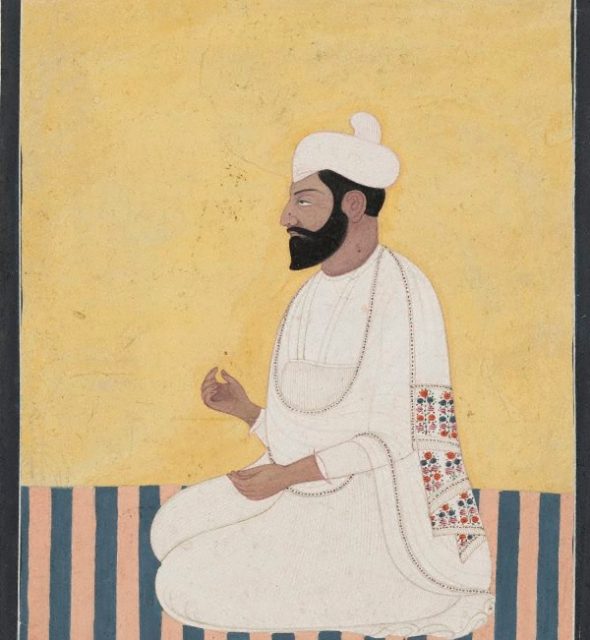ANGAD DEV, GURU, (1504-1552), the second of the ten Gurus or prophet teachers of the Sikh faith was born Lahina on Baisakh vadi 1, Sammat 1561 Bikrami, corresponding with 31 March 1504. His father, Bhai Pheru, was a Trehan Khatri and a trader of humble means, whose ancestral home was located near the village of Matte di Sarai, now known as Sarai Nanga, 16 km from Muktsar, in present day district of Faridkot in the Punjab. His mother\'s name is variously given as Sabhirai, Ramo, Daya Kaur and Mansa Devi. In Magh 1576 Bk/January 1520, he was married to Khivi, daughter of Devi Chand, a Marvah Khatri from the village of Sanghar, near Khadur, in Amritsar district.

GUJJAR SINGH BHANGI (d. 1788), one of the triumvirate who ruled over Lahore for thirty years before its occupation by Ranjil Singh, was son of a cultivator of very modest means, Nattha Singh. Strong and well built, Gujyar Singh received the vows of the Khalsa at the hands of his maternal grandfather Gurbakhsh Singh Rorarivala, who presented him with a horse and recruited him a member of his band. As Gurbakhsh Singh was growing old, he made Guijar Singh head of his band. Soon the band was united to the force of Hari Singh, head of the Bharigi misi or chief ship. Gujjar Singh set out on a career of conquest and plunder.
- 1
- 2






